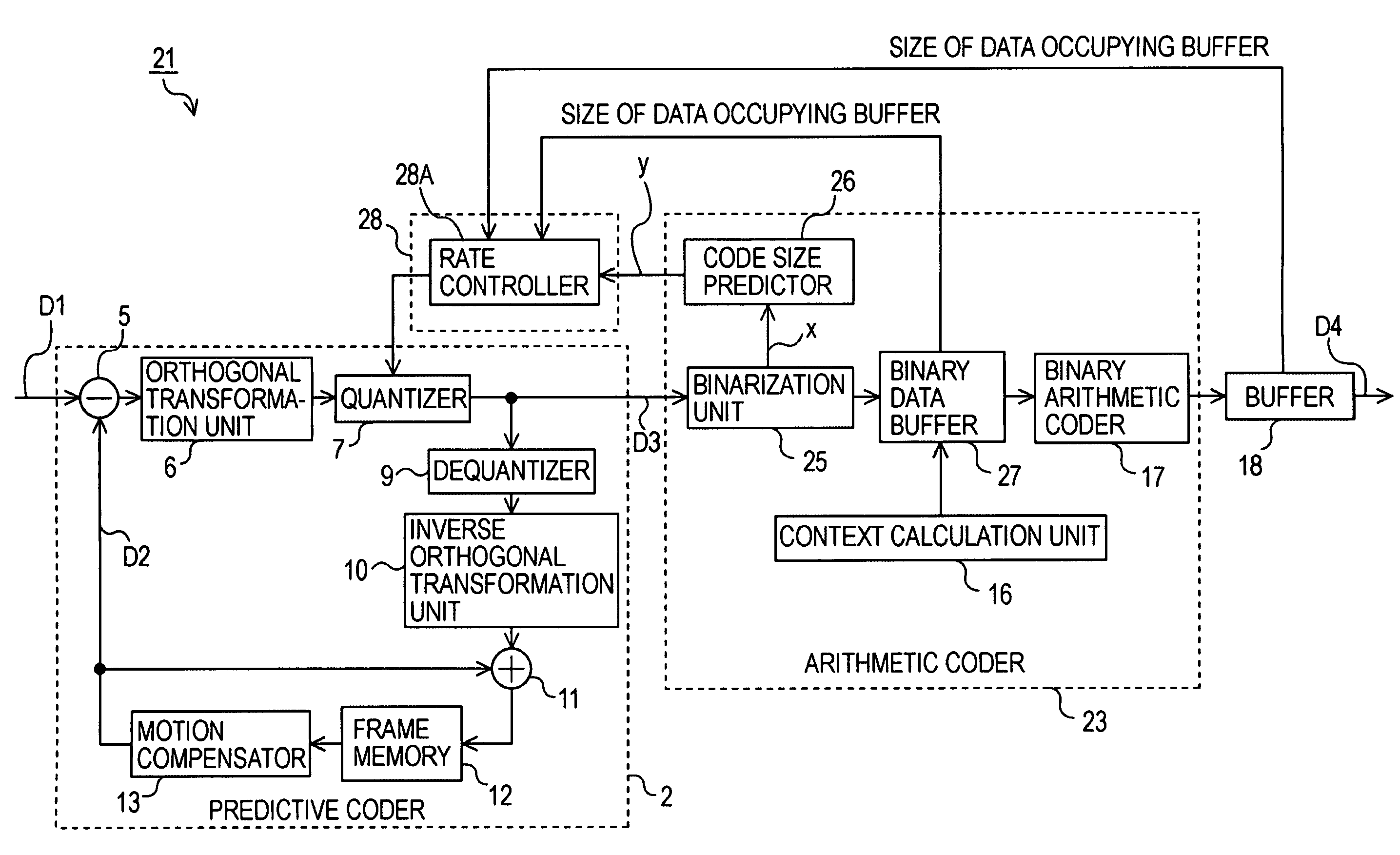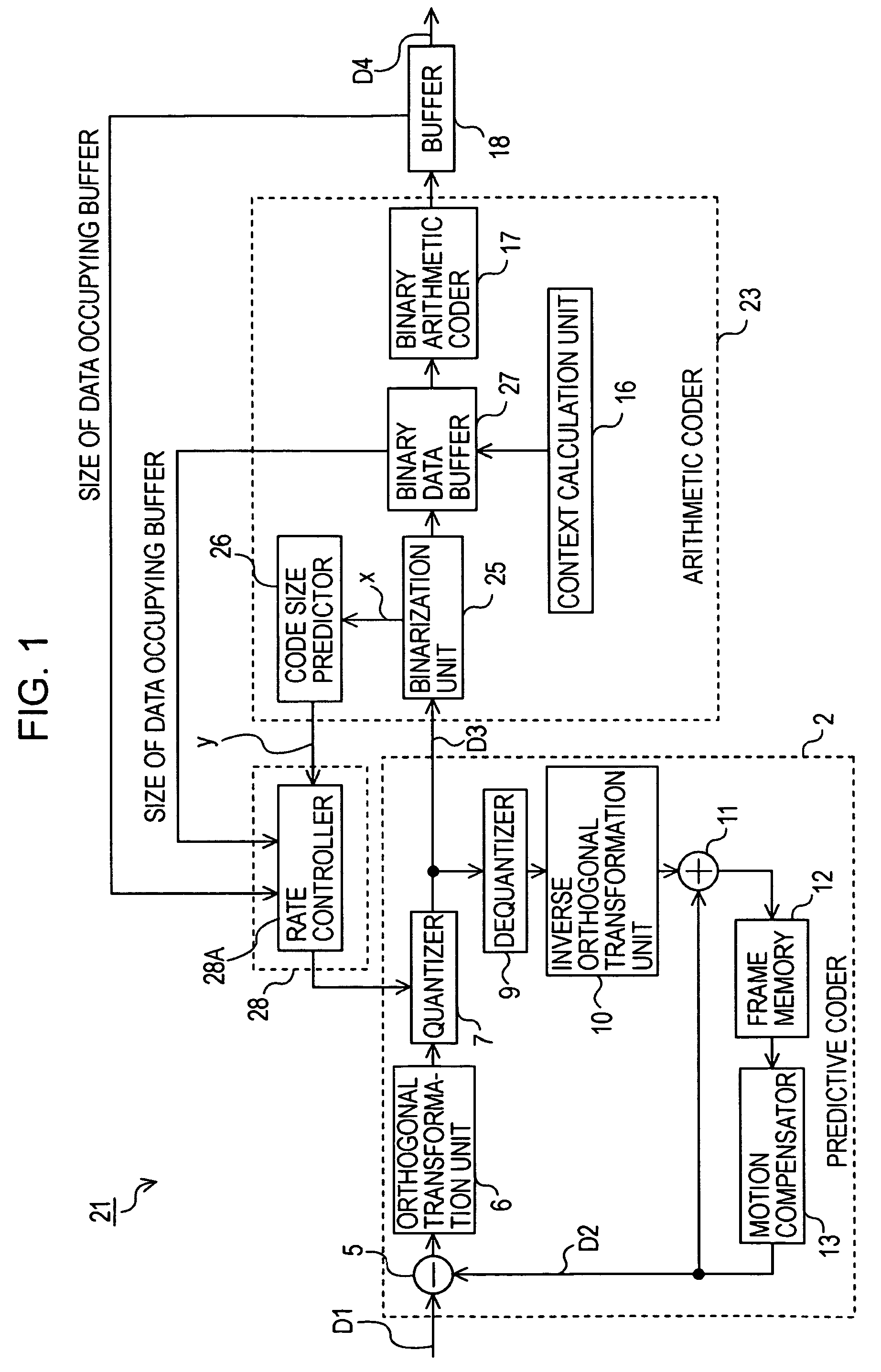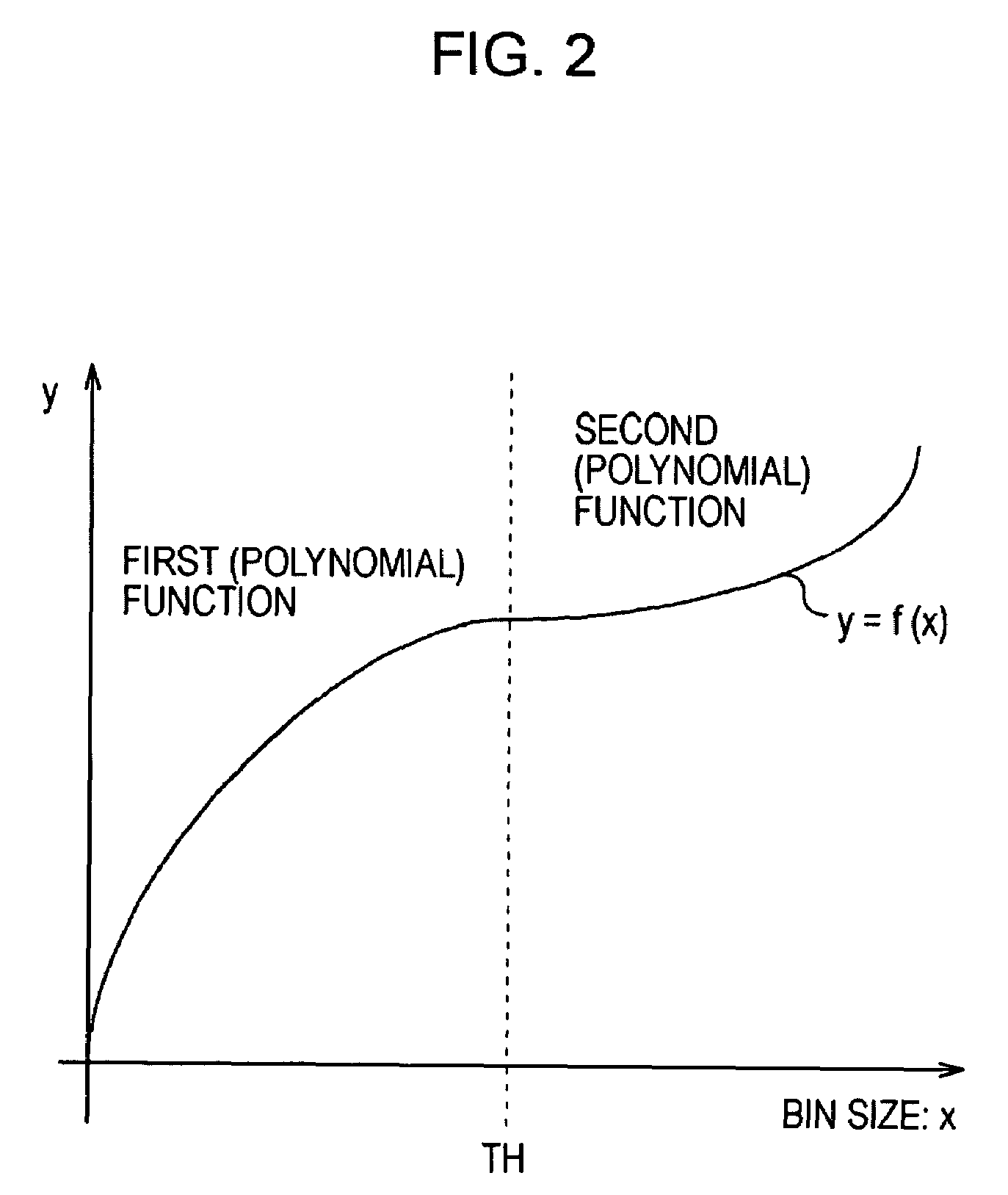Coding apparatus, coding method, program for executing the method, and recording medium storing the program
a coding apparatus and a technology for coding methods, applied in the field of coding apparatuses, can solve the problems of increasing the scale of circuitry involved, the computational intensiveness of avc coding methods for coding and decoding, and the increase of processing conducted by arithmetic coders b>3/b>, so as to reduce the scale of circuitry involved, the effect of reducing the energy consumed thereby and speed
- Summary
- Abstract
- Description
- Claims
- Application Information
AI Technical Summary
Benefits of technology
Problems solved by technology
Method used
Image
Examples
first embodiment
[0039](1) Configuration of the Embodiment
[0040]FIG. 1 is a block diagram illustrating the configuration of a coding apparatus in accordance with a first embodiment of the present invention. The coding apparatus 21 depicted in FIG. 1 is configured identically to the coding apparatus 1 previously described with reference to FIG. 9, except in that an arithmetic coder 23 and a controller 28 have been provided in place of the arithmetic coder 3 and the controller 8, respectively. Furthermore, the arithmetic coder 23 is configured identically to the arithmetic coder 3 of the coding apparatus 1 previously described with reference to FIG. 9, except in that a binarization unit 25, a code length predictor 26, and a binary data buffer 27 have been provided in place of the binarization unit 15.
[0041]In the arithmetic coder 23, the binarization unit 25 operates similarly to the binarization unit 15, converting the many-valued syntax elements from the output data of the quantizer 7, motion vector...
second embodiment
[0088]FIG. 6 is a block diagram illustrating, by way of comparison with FIG. 5, the configuration of a coding apparatus in accordance with a second embodiment of the present invention. The coding apparatus 31 illustrated in FIG. 6 is provided with a controller 38 in place of the controller 28. The controller 38 herein is configured identically to the controller 28 in accordance with foregoing embodiment, except in that a rate controller 38A has been provided in place of the rate controller 28A.
[0089]Using the rate controller 38A, the controller 38 in accordance with the present embodiment dynamically varies the predictive function according to the level of activity detected by the activity detector. The rate controller 38A is configured identically to the rate controller 28A, except in that the rate controller 38A is also configured to dynamically vary the predictive function according to the level of activity as described above.
[0090]More specifically, when the level of activity ex...
third embodiment
[0093]FIG. 7 is a block diagram illustrating, by way of comparison with FIG. 5, the configuration of a coding apparatus in accordance with a third embodiment of the present invention. The coding apparatus 41 illustrated in FIG. 7 is provided with a controller 48 in place of the controller 28. The controller 48 herein is configured identically to the controller 28 in accordance with the embodiment described previously, except in that a rate controller 48A has been provided in place of the rate controller 28A.
[0094]Using the rate controller 48A, the controller 48 in accordance with the present embodiment dynamically varies the predictive function according to the values in the output data output from the quantizer 7. The rate controller 48A is configured identically to the rate controller 28A, except in that the rate controller 48A is also configured to dynamically vary the predictive function according to the values in the output data output from the quantizer 7 as described above.
[0...
PUM
 Login to View More
Login to View More Abstract
Description
Claims
Application Information
 Login to View More
Login to View More - R&D
- Intellectual Property
- Life Sciences
- Materials
- Tech Scout
- Unparalleled Data Quality
- Higher Quality Content
- 60% Fewer Hallucinations
Browse by: Latest US Patents, China's latest patents, Technical Efficacy Thesaurus, Application Domain, Technology Topic, Popular Technical Reports.
© 2025 PatSnap. All rights reserved.Legal|Privacy policy|Modern Slavery Act Transparency Statement|Sitemap|About US| Contact US: help@patsnap.com



